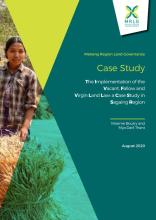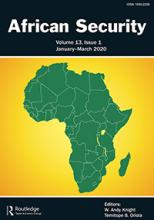Land Library
Welcome to the Land Portal Library. Explore our vast collection of open-access resources (over 74,000) including reports, journal articles, research papers, peer-reviewed publications, legal documents, videos and much more.
/ library resources
Showing items 1 through 9 of 120.This Impact Study examines how tenure security translates into increased investments, productivity, and incomes.
This summary provides an overvew of LIFTs impact study on how tenure security translates into increased investments, productivity, and incomes. It presents evidence on the impact of secondary level land certification (SLLC) on rural farmers in Ethiopia.
This study assesses the impact of the Satellite Woreda Approach on rural land administration performance of 28 woredas and critical success factors to institutionalise the approach.This resource was published in the frame of the Land Investment for Transformation (LIFT) Programme.
This Case Study looks at the implementation of the Vacant, Fallow and Virgin Lands Management Law (VFV Law) in seven villages in Sagaing Region, to assess the practices on the ground and how the law impacts the land tenure security of smallholder farmers.
This survey report is the third in its series and provides findings from a panel of beneficiary households towards the end of the programme to measure the sustained impacts of LIFTs rural land rental market and access to finance interventions.This resource was published in the frame of the Land I
The paper seeks to establish the role of religion and culture in the realization of women’s rights to property in Nigeria. It begins by affirming that protecting women’s rights to property in Nigeria is a fundamental step towards achieving the 5th Sustainable Development Goal of gender equality.
This survey examines the impact of second level land certification (SLLC) on tenure security;disputes;land rental;credit markets and changes in investment..This resource was published in the frame of the Land Investment for Transformation (LIFT) Programme.
The recent spate of violence mostly in north-central and southern Nigeria, typically credited to conflicts between herders and farmers, and the reactions, narratives, and representations that have attended them, calls for an examination of core security questions: who or what is to be secured, fr
The recent spate of violence mostly in north-central and southern Nigeria, typically credited to conflicts between herders and farmers, and the reactions, narratives, and representations that have attended them, calls for an examination of core security questions: who or what is to be secured, fr




